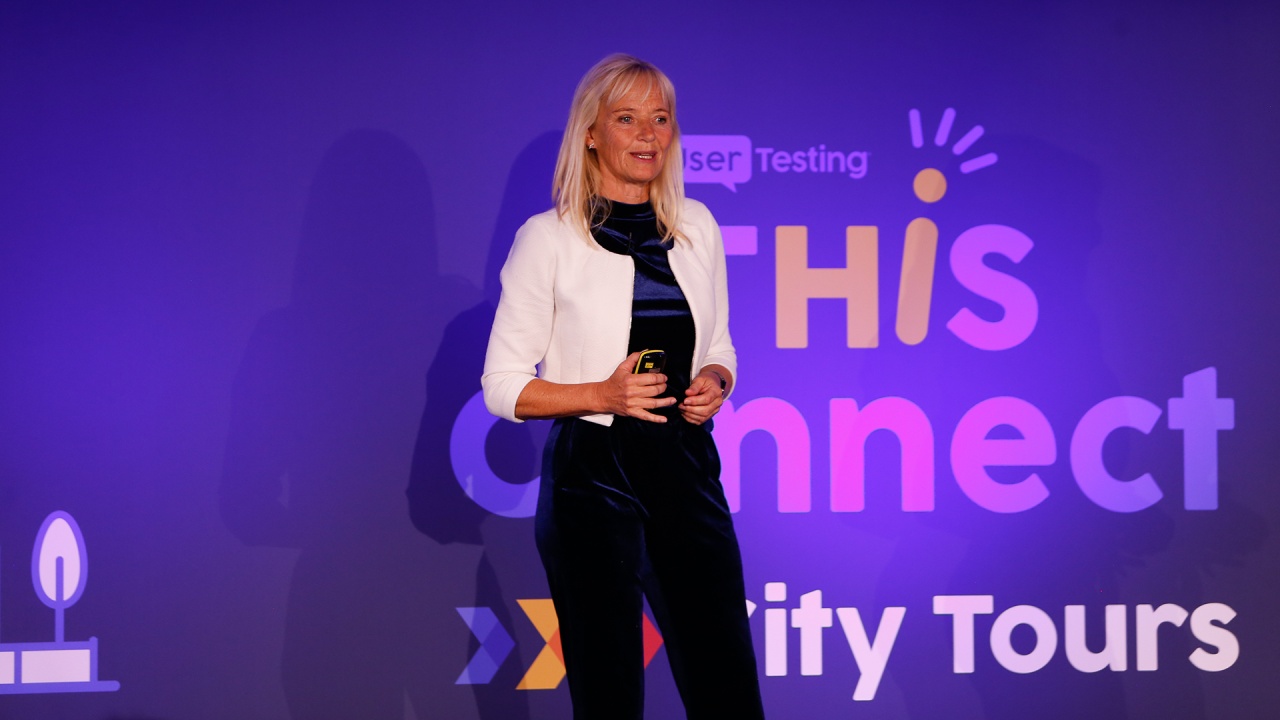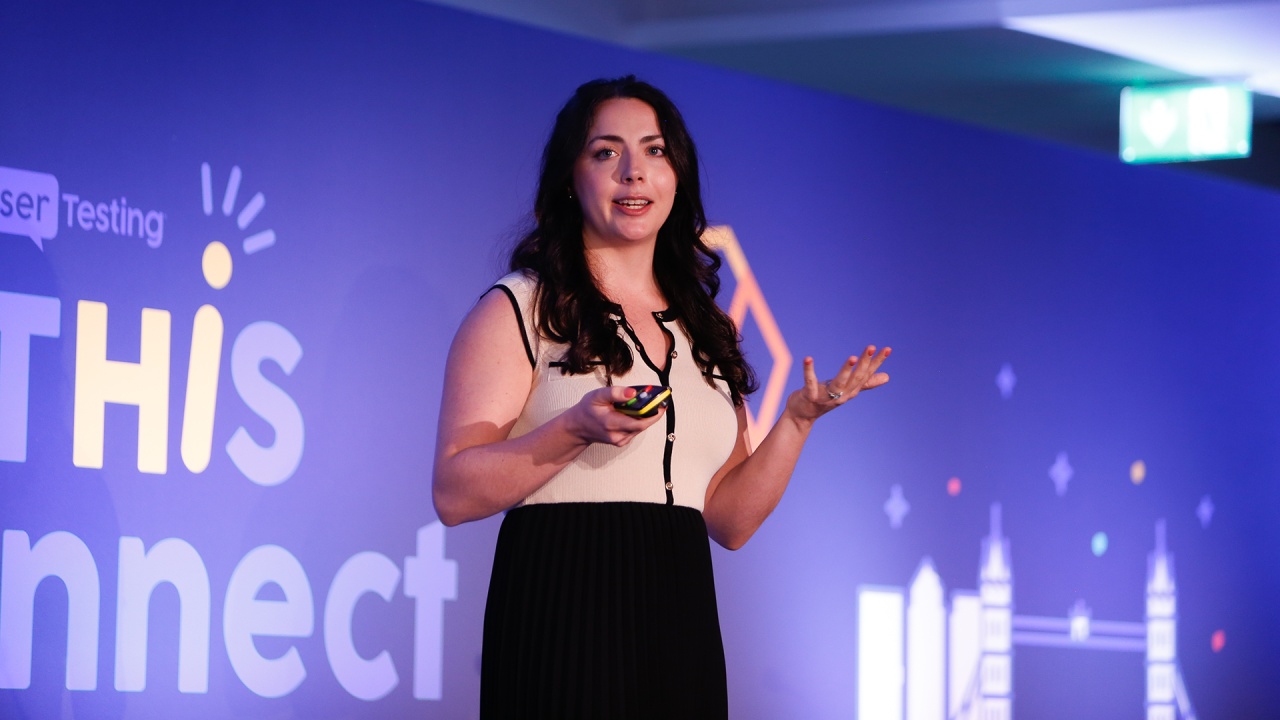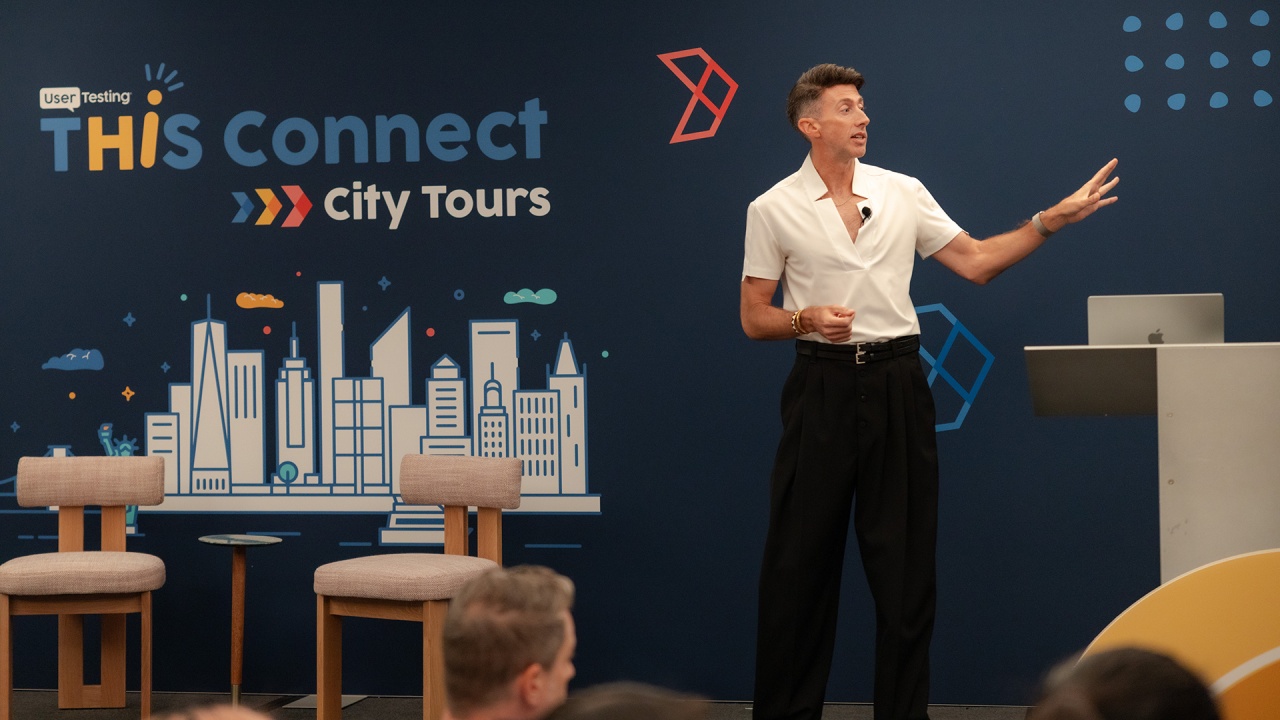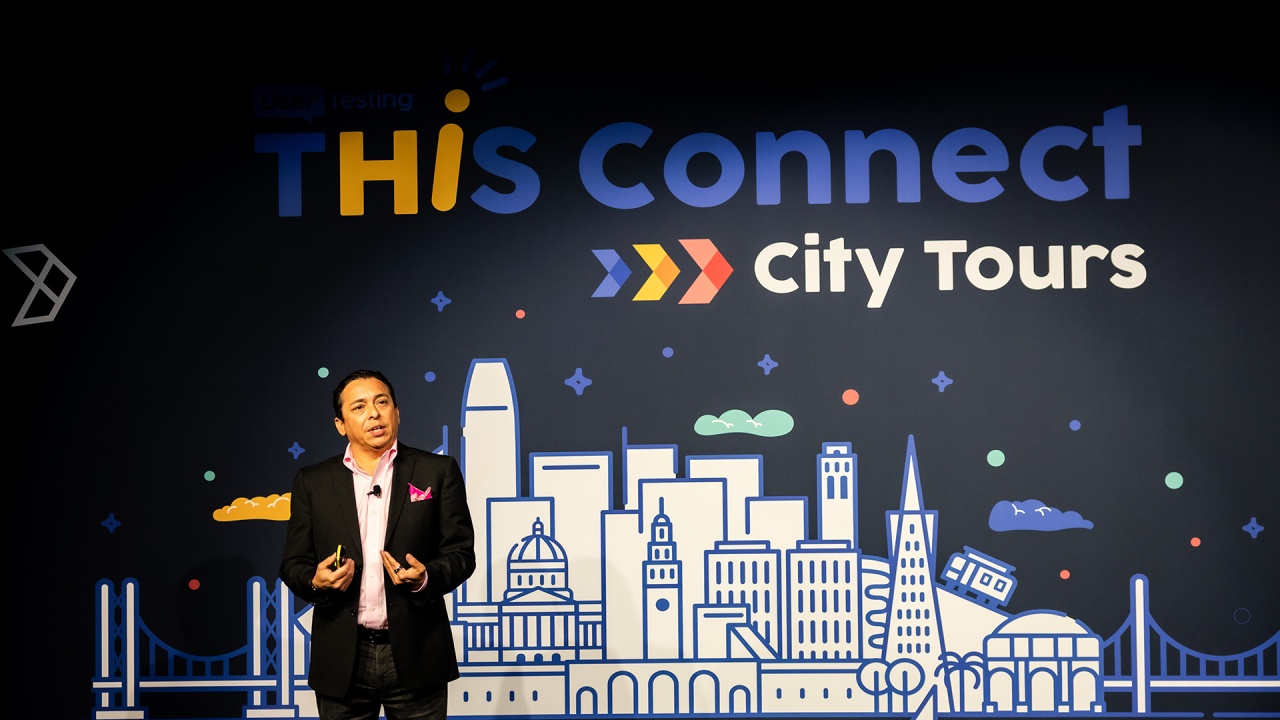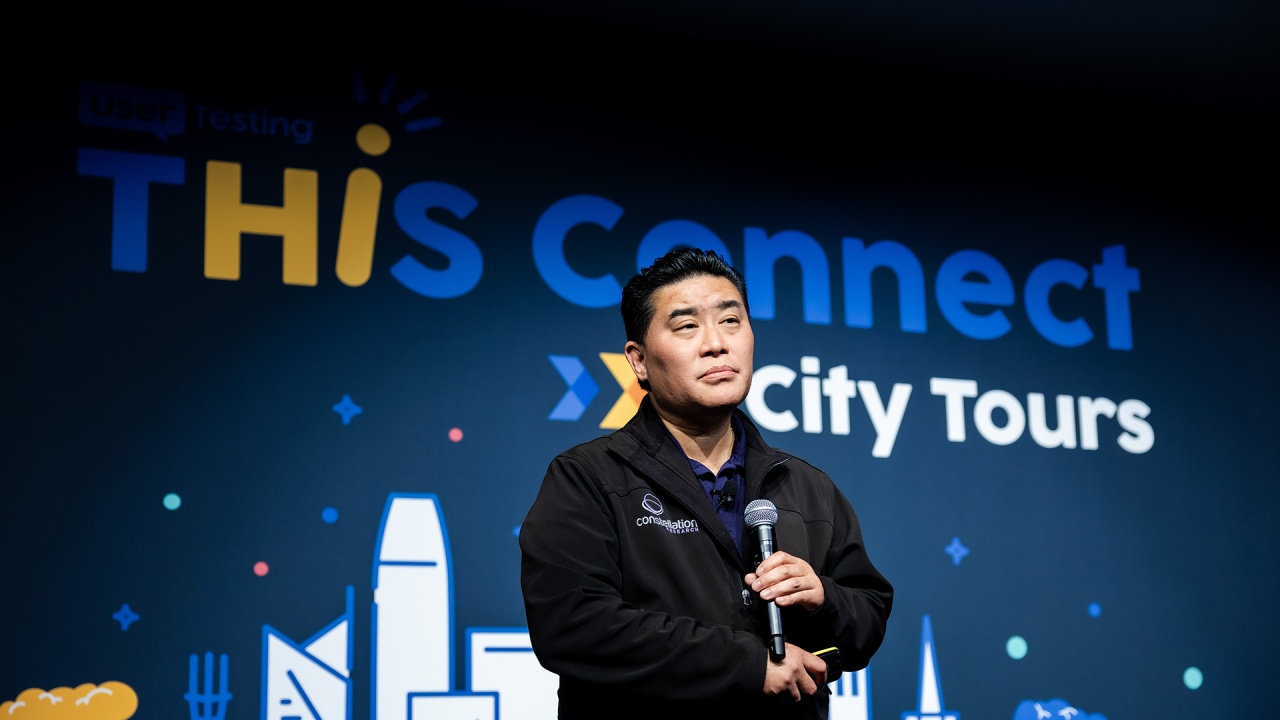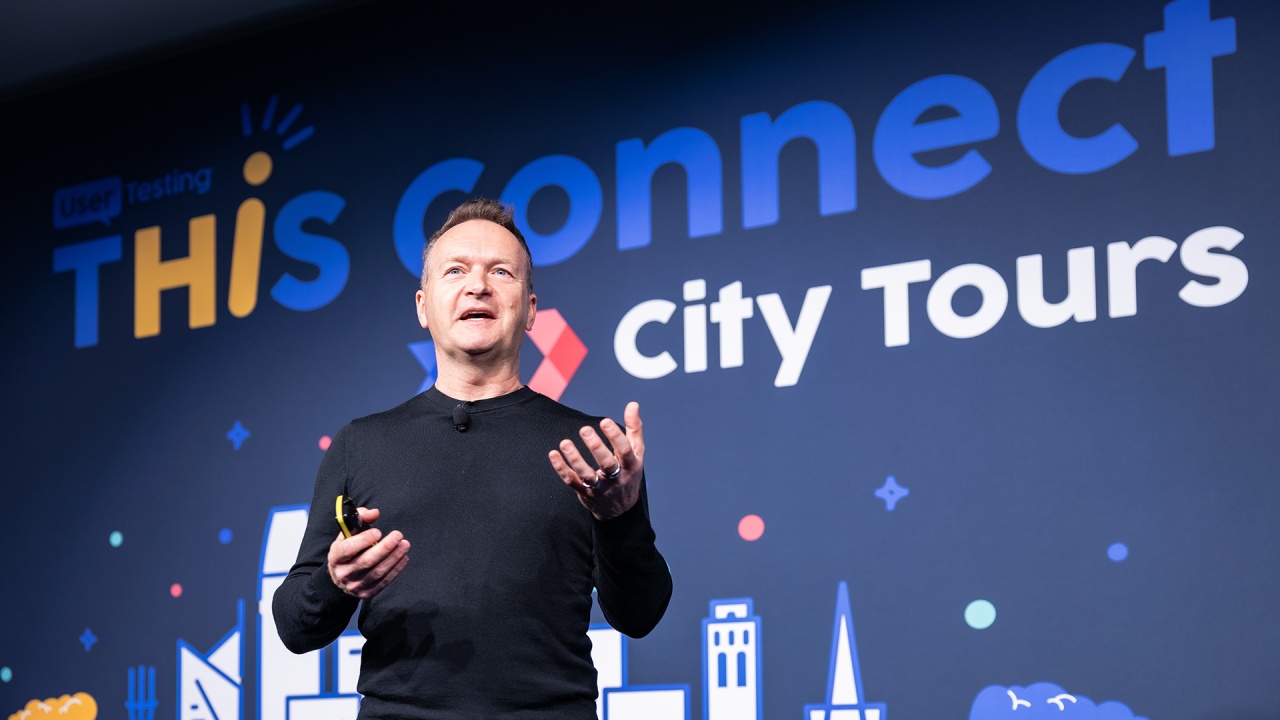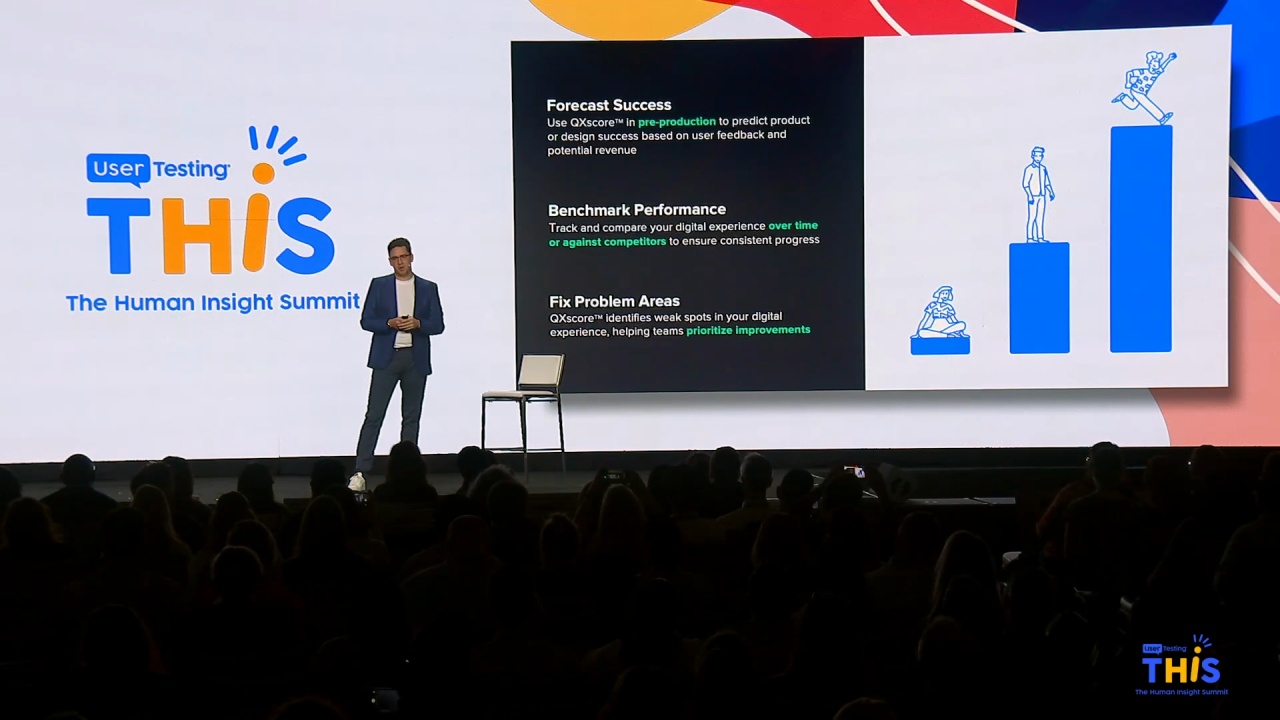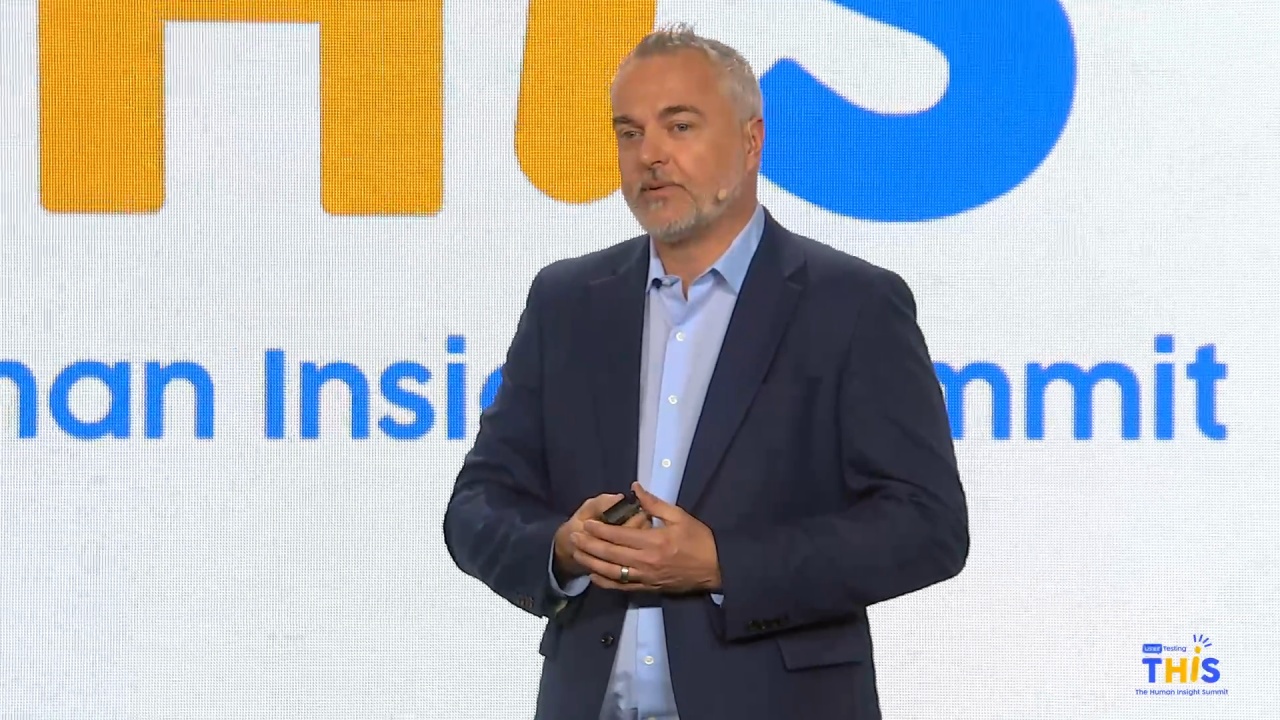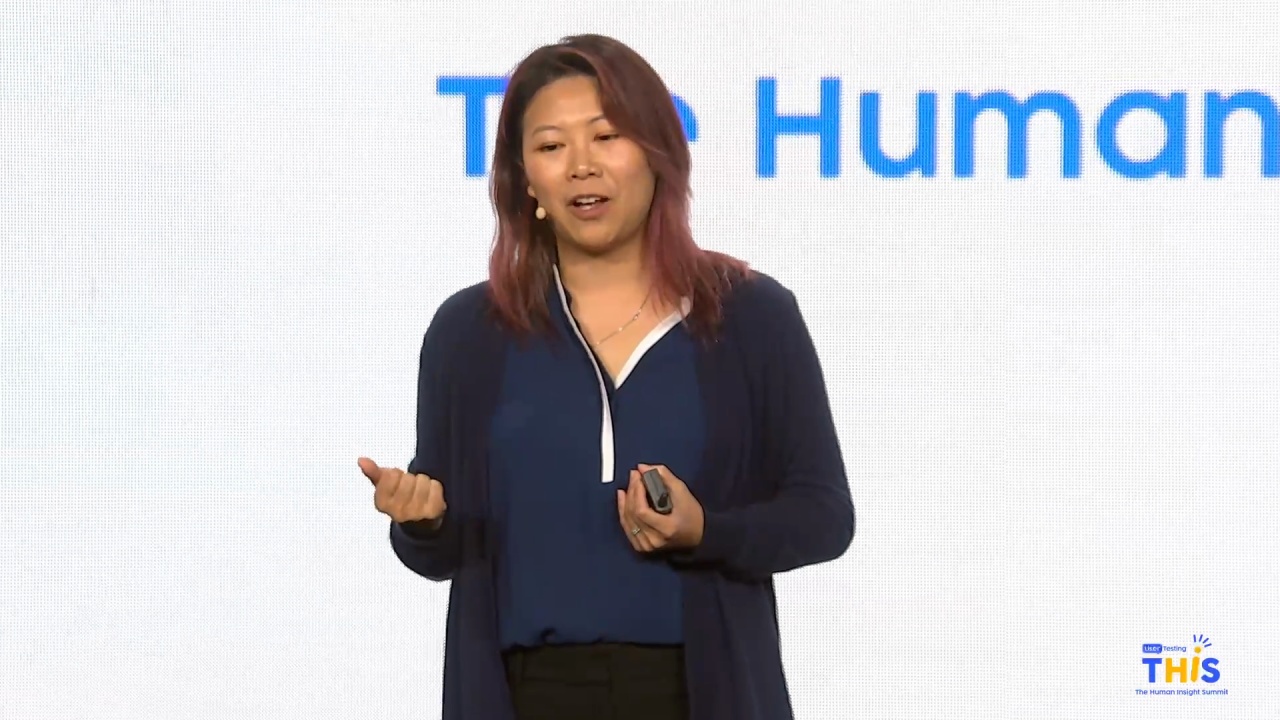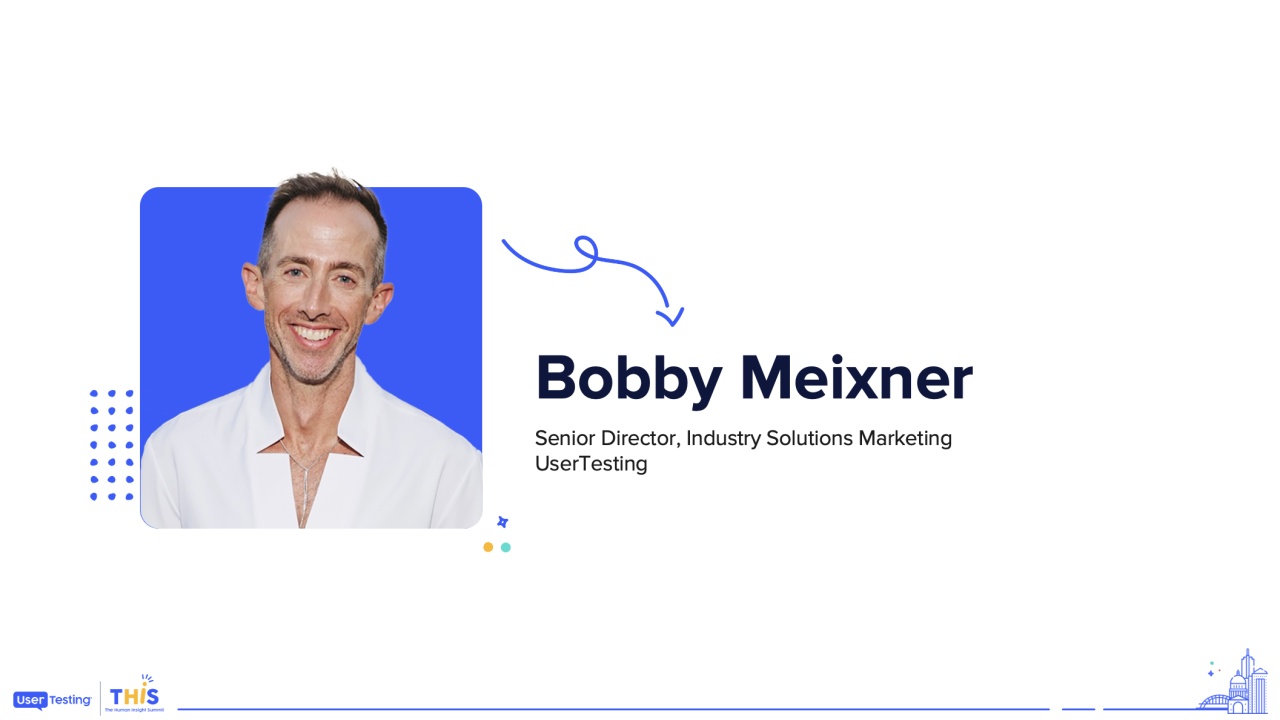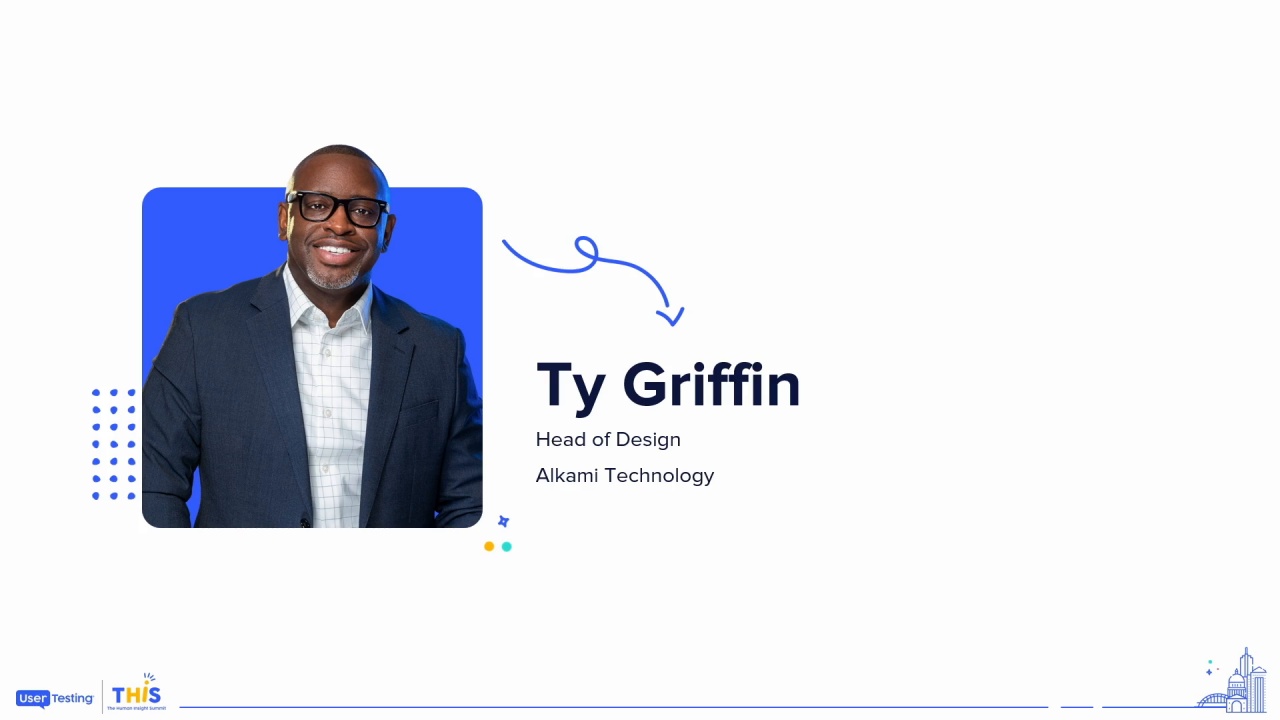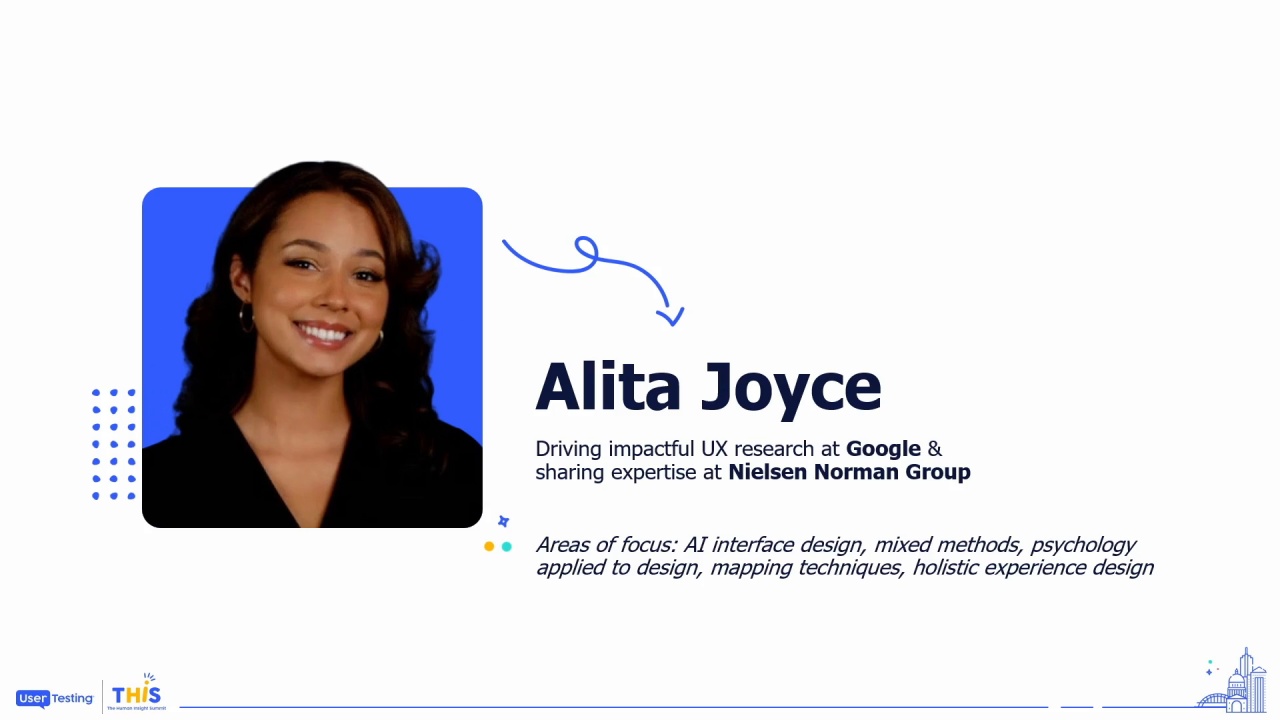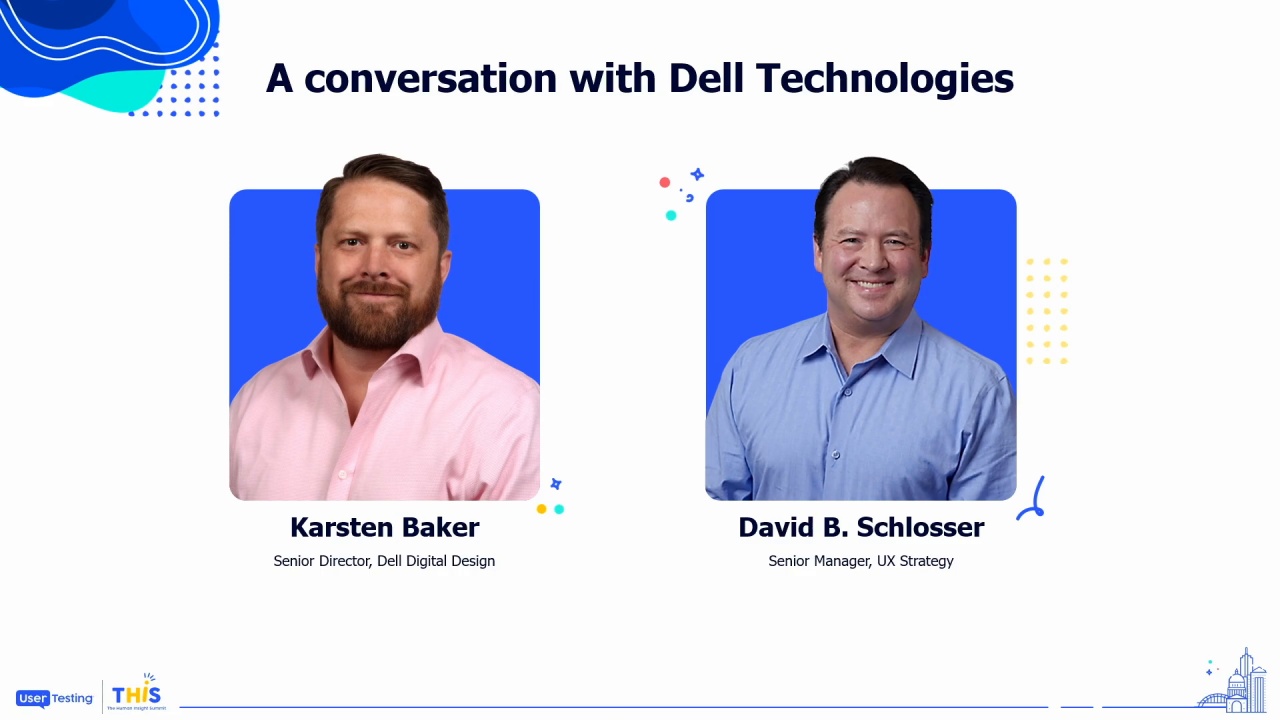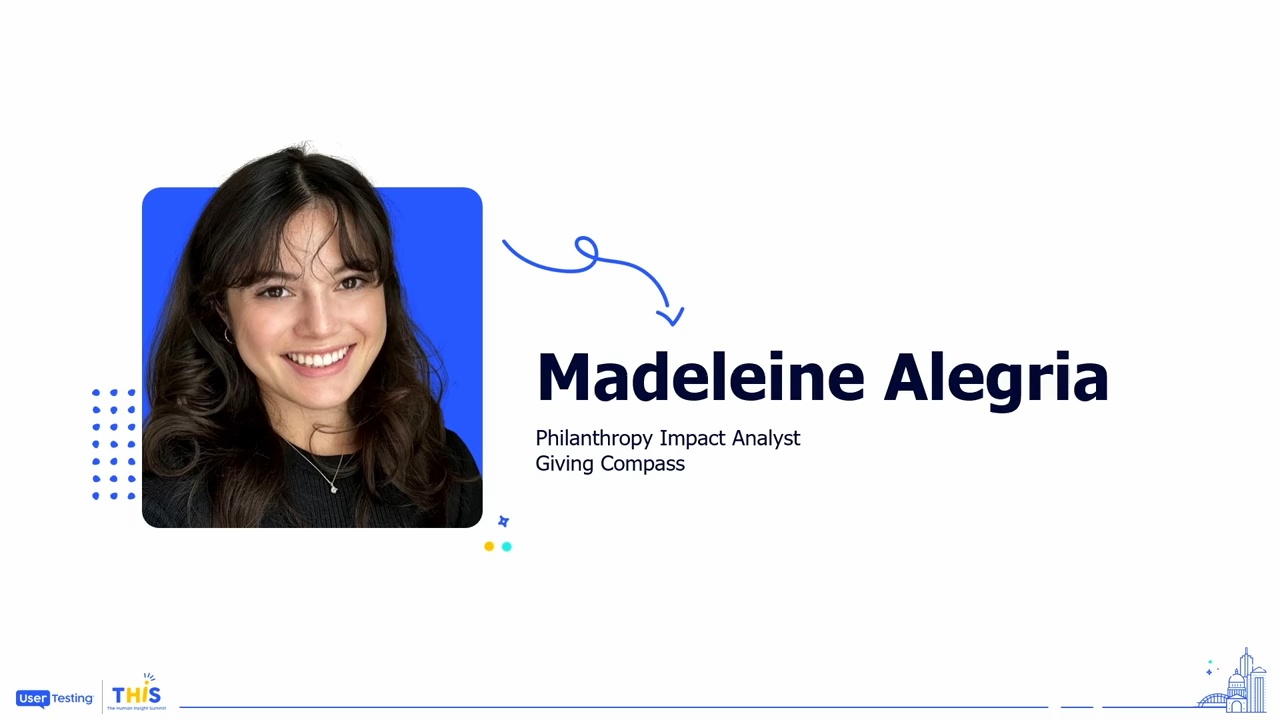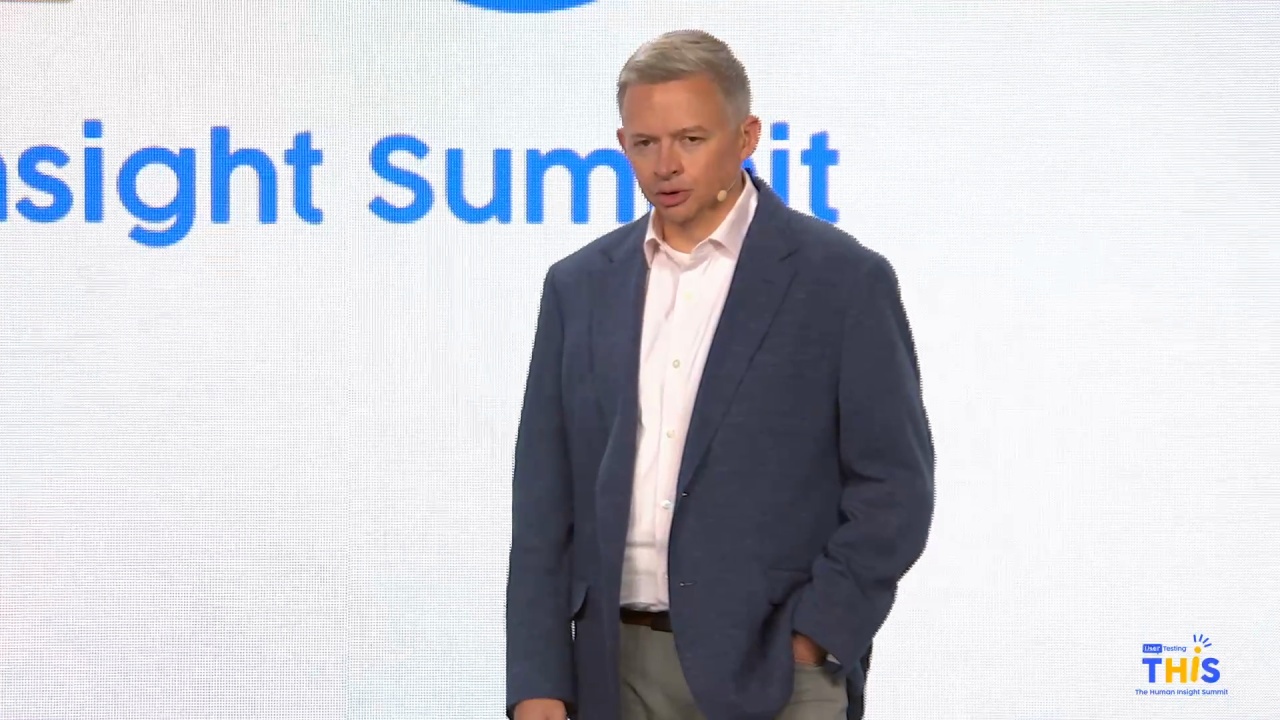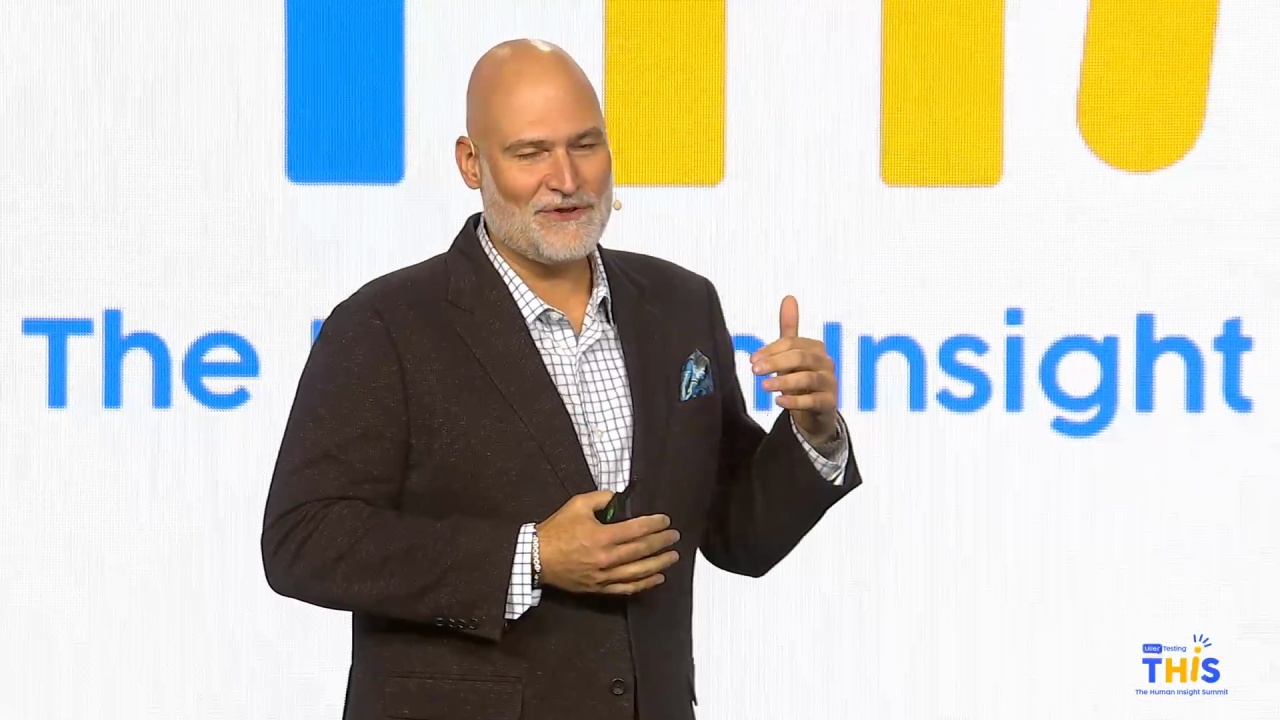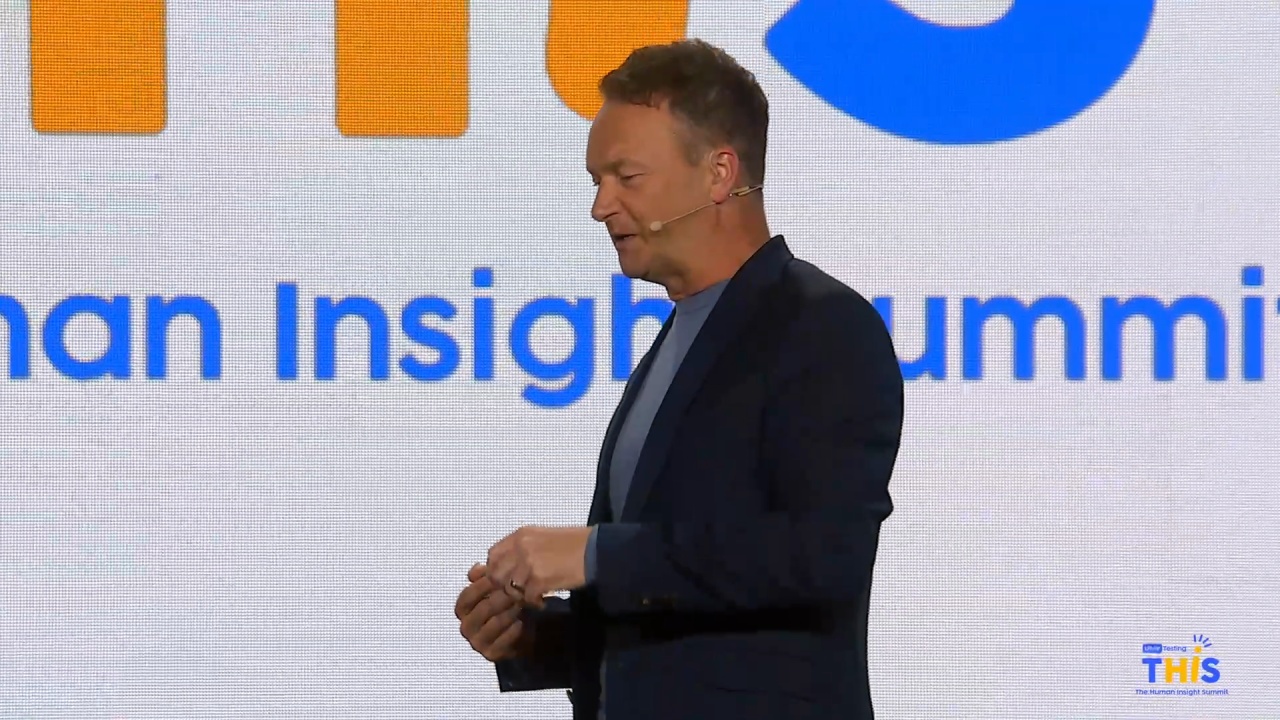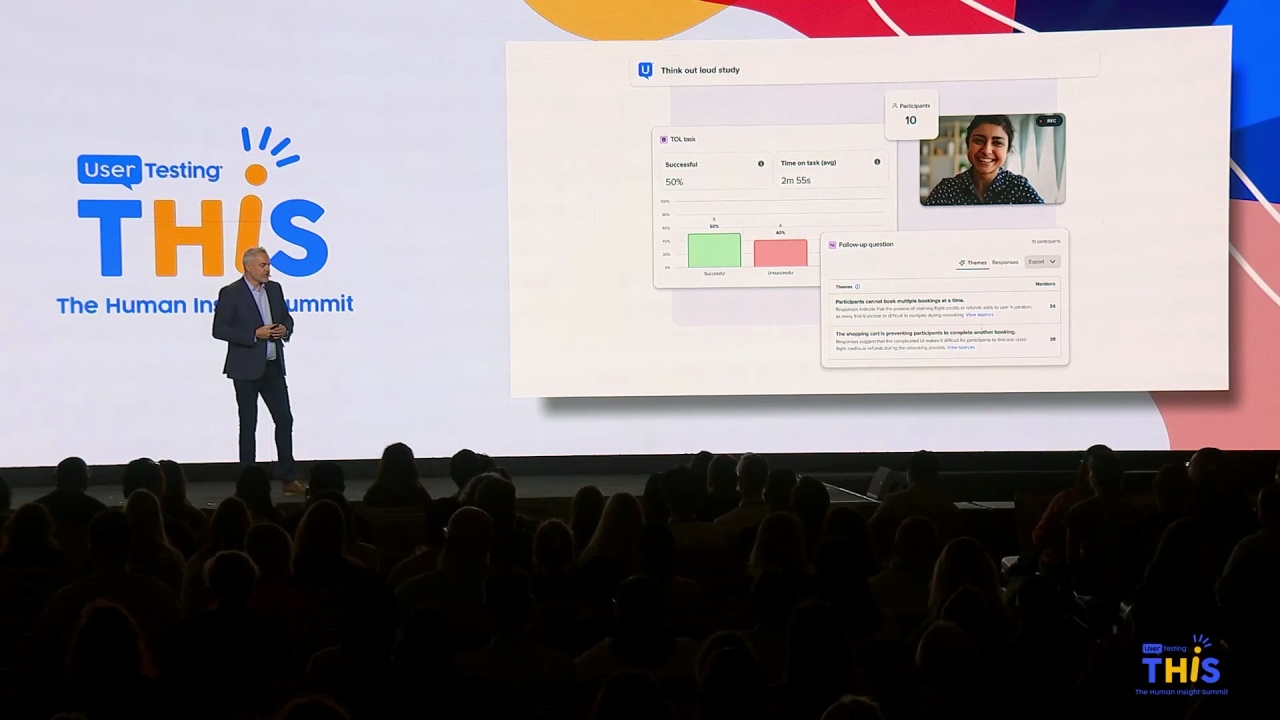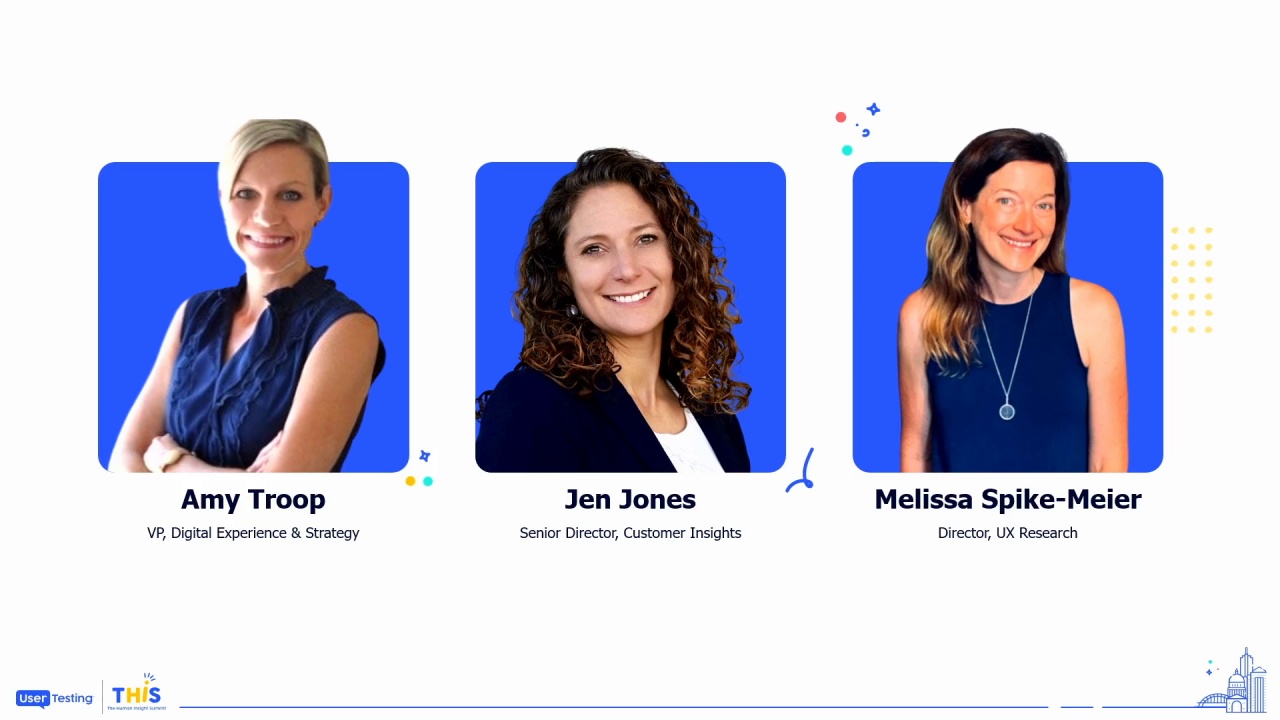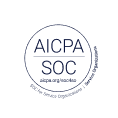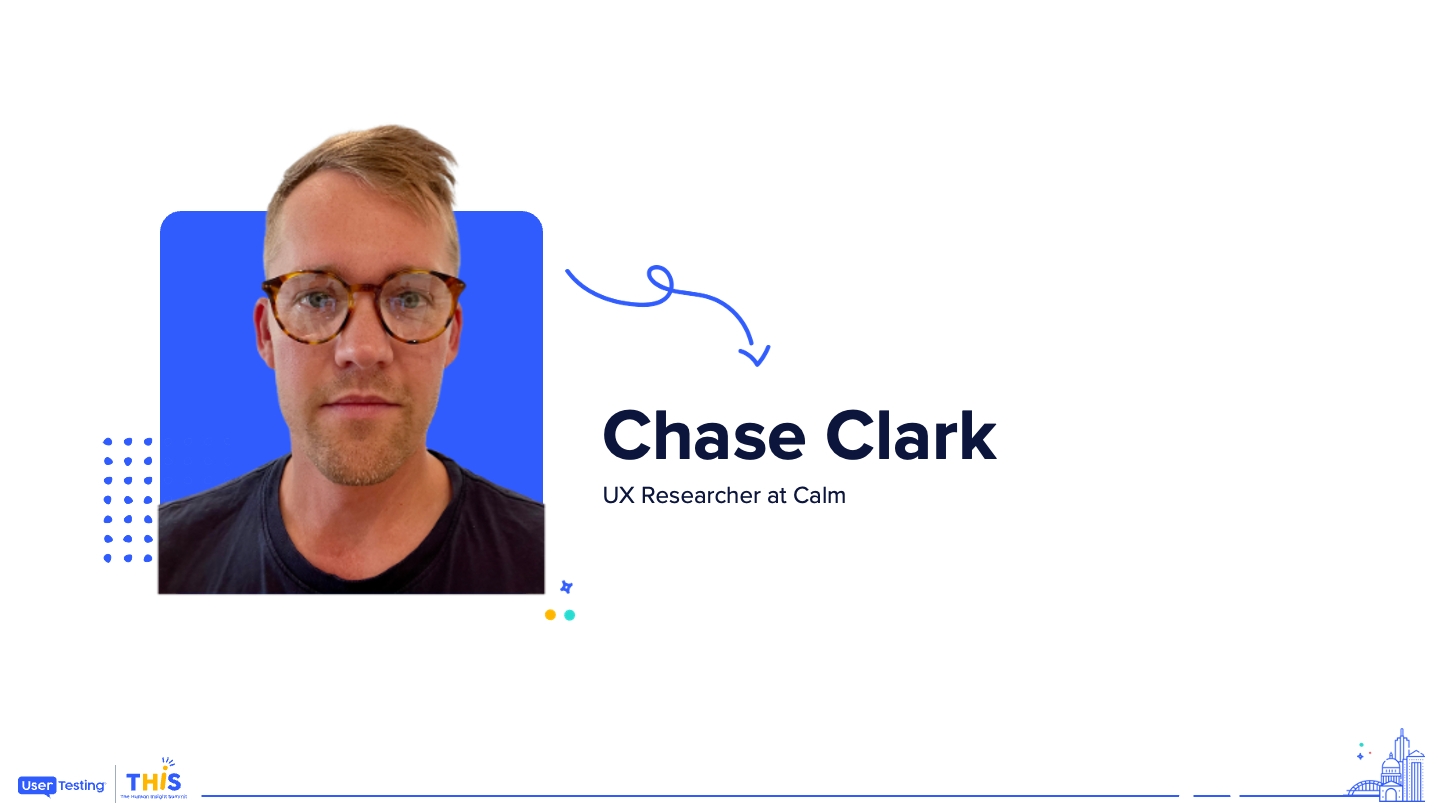
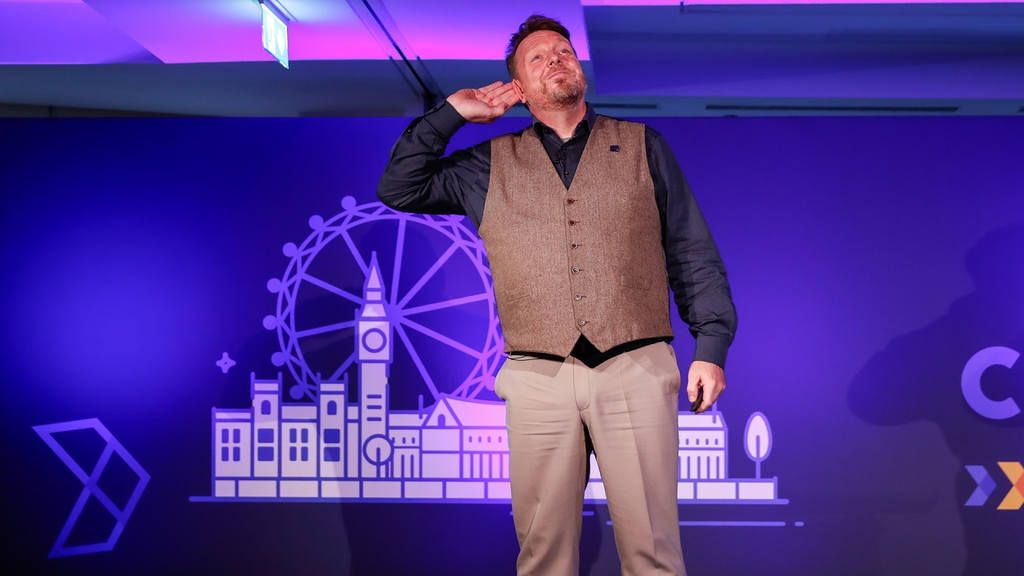
Adam Lawrence: Doing, not talking. Co-creating impact in your organisation
Adam Lawrence
leading expert in Design Thinking and Co-founder , WorkPlayExperience
What separates talkers from doers in innovation? In this fast-paced, hands-on session, Adam explores the mindsets and micro-behaviors that create momentum and real-world progress — even under pressure.
Here is Adam Lawrence to take us away.
Thank you. Thank you so much.
Thank you. I have my own clicker.
How much everybody? Can you hear me okay? Yeah. Yes. So, hi. I'm Adam, and I'm from Bavaria, which is why I dress like a Hobbit.
It's really challenging to be on stage after Robbie with the Gucci shoes and, after the lady from L'Oreal with that lovely outfit. But here I am, as I am. And, actually, I have a request for you. This is a weird request.
But, as you've just come back from the break and...
Here is Adam Lawrence to take us away.
Thank you. Thank you so much.
Thank you. I have my own clicker.
How much everybody? Can you hear me okay? Yeah. Yes. So, hi. I'm Adam, and I'm from Bavaria, which is why I dress like a Hobbit.
It's really challenging to be on stage after Robbie with the Gucci shoes and, after the lady from L'Oreal with that lovely outfit. But here I am, as I am. And, actually, I have a request for you. This is a weird request.
But, as you've just come back from the break and you're not too settled in your spaces yet, do you wanna just, like, come in a bit? Shove along a few seats. Yeah? If you're in the West End, these seats here would be eighty bucks more than what's behind them.
I'm not asking you to cover the front row, but just just shove up. Yeah. I need you to be near people. I know many of us have introversion preferences, but if you could bunch up a little bit, move in.
Thank you so much. A round of applause for this lady here. Fantastic. Fantastic. Thank you very much.
Yeah. Yeah. Come on. Come on in a little bit. A little bit more. A little bit more.
There are great seats here if you want them. Thank you very much, sir. That's amazing. Thanks for that.
So before I actually kick off, I'd like to Thank you. Thank you. More round of applause. These amazing people here getting into the best seats in the house.
Second row, you won't get spat on. That's fantastic.
So before I kick off, I wanna ask you folks a question. Yeah? And I'd like you to imagine for a moment that you all work for an airport.
And this is a true story from a real case. And in that airport, you know that you have some data. And this data says that older travelers use the toilet facilities in the airport three times more often than younger travelers. I'm not sure what older travelers actually meant here, but I turned fifty, seven years ago. On the night I turned fifty, my Facebook advertising profile changed overnight from being about adventure holidays and tight pants to garden furniture and confidence products. So I'm guessing this is probably fifty plus. Any of the gentlemen out there who've made that change in your advertising, you'll know where I am.
So the question I want to ask you is this, if you have this data, good data on your airport visitors, and you want to improve their experience, what do you do? Have a conversation with your neighbor? You've got forty five seconds on that one. What would you do? If you haven't got a neighbor, then scooch along and find somebody.
Have a conversation.
And thirty more seconds.
And ten, nine, eight, seven, six, five, four, three, two, one. And thank your colleagues with a round of applause. Thank them. Thank them.
Thank them. Thank them. Fantastic. So what are some ideas? What would you do? Okay. You hit the big red user testing button straight away.
You call them. They're hotline. But what else would you do? Any thoughts?
More bathrooms. More bathrooms. More bathrooms. Install more bathrooms. That's a very disruptive thing to do in a working building, of course.
Very expensive. A bathroom is not like a usual room. It has to have down downhill drain off, all this kind of stuff. That could be the way forward.
What else can we do?
Talk to the travelers. Talk to the travelers. That's an interesting one because how would you do that?
Do you approach them as they leave the bathroom and say, excuse me.
What were you doing in there?
It's a difficult conversation. Putting up cameras is illegal and creepy. Yeah? Don't do that one. Any other ideas?
Rate the experience. Yeah. Quality quantity data. Great. We'll know if they loved it or hated it, but we won't know why. Anything else?
Think about signage. Signage. That is a great one. Make them easier to find. Yeah. There's an interesting, though, conflict in airport business model because the more signage we have, which also means the more advertising we have, the more folks miss planes.
Yeah. It's like the street sign forest that gets us lost. We get to have more accidents with more street signs rather than fewer. So some great ideas there.
Some great ideas there. And the ones I've heard before. So quite expensive maybe with the new toilets. Some folks say make them more accessible.
That's quite a nice one. Or play eighties music is another one in the bathrooms. Yeah. Often heard that one.
But, well, in this real study, what the folks did, it was a German team. Didn't actually ask people what they were doing in the bathrooms. That was because it would be too invasive.
Instead, they observed by washing their hands for a very long time and seeing what was happening in the hand washing area of the bathrooms. And they found that these older folks like me were using the bathrooms three times more often because in the bathroom, you can hear the flight announcements better.
Done, done, da.
So many of our ideas there may have actually improved the experience, but none of them solved the actual problem, which was one of knowing when my flight is leaving.
Hold that thought. Okay? The QR code next few slides that links some of the resource I talk about here and to me, if you want to get in touch, that's fantastic. It's not compulsory, but there are some communities, some events, and so on there you might find interesting.
This session is a bit different from the previous ones, less of a presentation. I want to do some stuff with you, try some things out, don't be scared, no compulsory participation ever in my sessions. You can always hang back. Yeah.
And also, I may abandon my slides at some point. That happens. It's not a promise. Yeah.
We'll see how things go. So this is a boring intro. This is me. This is where I come from.
Generally, working with large organizations, helping them to work differently or have more options in the way they work, not changing anybody's toolset, but adding to that toolset to be more, what, more innovative, more customer centric, more down to earth, more evidence based, and so on. I'm German, as I said before. I live in Germany. And by the way, in my hometown today started the world's best beer festival, and I am here with you.
That's how much I love you today. So there's a gender, of course, what's going on, how blah blah blah blah and at the end of the big one. So what is happening? Now, this is a CX conference, so the things here have been said already today.
But there are things I talk about often to my clients, why they should be more interested in changing the way they approach problem solving, because we have customers who have changed. We've talked already about seamless experiences being really, really important. We've talked there about users and customers being more informed and empowered. We've talked about people who are happy to switch.
They're happy to switch between our organization and the next one after just one bad experience. By the way, I do recommend when you have this kind of data, do it from big boring organizations.
Data from McKinsey, data from Forrester, and so on, flies much better than what Apple or Uber or anybody hip and new is saying. Yeah.
These kind of slides are very helpful as well. We know that people who invest in, let's say, designerly work in getting better at what they do have, I think, thirty two percent, more revenue and fifty six percent more shareholder return as a McKinsey report there. Correlation, by the way, is not the same as causation, but it's interesting to see those lines going up. But that's all a bit boring because what it leads to is this situation.
Situations where people in organizations are forced to make decisions.
What do we do? We have this data. What do we do? These insights, these verbatims, these numbers, how do we deal with that? Which way do we go? And what I want to talk about first is how people make those decisions.
Now, there are three main decision drivers that I see. And I'm gonna try some of these out with you, but also just talk about them really briefly.
The first one is brain work. People try to think their way to a solution because we're smart people. We get paid lots of money to make good decisions. People in power in organizations are even called decision makers.
Yeah. But if we do that, we get the situation like we had before, where change happens in this model. We have a really good idea.
Yeah. We validate that idea usually by talking to people who think very much the way we think about it to see if they like the idea as well. What we actually learn is if they like us or not. Yeah.
That's true, by the way. That's not a joke. That's what really happens. And then, we implement the idea, which is easy.
It's a good idea. And then, yes, I win. Yeah.
Now, even if we add a robust validation here using something like research around that, we still may have the problem, but we actually started with the wrong idea.
This is high risk, and the reason it's high risk is that most of this happens in our heads. And what's happening in our heads is simply unreliable. There are a billion books at the airport about that go and buy one and shake yourself.
Remember this one? If we'd followed our instinct on this one, we might be building new lavatories in the airport or putting up signage or playing eighties music, which would make it worse by the way. You couldn't even hear the announcements in the bathrooms then. Yeah? And we might ask people, we might find evidence that they were all good ideas, but they wouldn't have actually addressed the actual problem. So how do we get to that?
So that brain work is the first decision driver.
The next thing that people tend to switch to is best practice. We all love best practice, and there are plenty of great best practices around around customer experience innovation. Yeah. You can read them anywhere. Your chattyPT will tell you all about them. Thing about best practices, if you follow best practice, you don't become best, you become average because everyone is doing that. Best practice is literally the opposite of innovation.
It is catching up. Yeah. So useful, but when is it useful? That's the question.
And then, if we look at those, we they're all useful at times. Brain work, trying to think your way to solution is is fast, but biased. So do it for stuff that you really know well. So just cut and paste the previous stuff, reliable, Kahneman, yeah, gut decisions, type one, I think he calls it.
Yeah. That's good for that. Best practice is tested, but it's dated. It's always old. Yeah.
So use that for commodity features. Don't redesign your shopping basket if your shopping basket is not your USP. Just copy a good one. Yeah.
And the third set, the interesting set to me, is this set around signature moments. Things that really supposed to make us stand out, and how do we develop those. And I think we need to do this based on different kinds of evidence.
That can be big, chunky evidence, and it can be quite small evidence that teams have access to directly themselves.
Structured, nimble exploration and experimentation, or as I call that, design or design doing.
So, I'd like to talk very briefly about how this works, then we're going to try one or two things out with you.
Now, you've probably seen this before. You know this one? Double diamond invented here in London. No?
Yes? No? Don't care. Bored already. Yeah. Get to the fun stuff. Okay. So this is the most common, model of design.
You open up and you close down. You fix the right problem before you fix the problem right, etcetera, etcetera, etcetera. And it's a very, very dry slide. People can kind of go, yeah, I get that intellectually.
One of my clients calls it the bikini diagram, by the way. I don't know. Yeah.
But let's actually see how that feels.
Well, I'd like you now, please, if you want to let you to stand up and find a partner.
You have ten, nine, eight, seven, six, five, four, three, two, one, and zero.
If you can't find a partner, put your hand in the air, make a noise like a giraffe, and somebody will find you one. Okay. Fantastic.
Threes also work, but twos are best.
I'm gonna give you a yes. Fantastic. I'm gonna give you a task with this partner. Yeah. And the task is gonna be a creative task to do together.
Now, you may have seen this before. That's fine. Yeah. But, if you have seen it before, see what it's saying to us here.
You're gonna plan a vacation together. Let's imagine you're both going on vacation together. Don't know why. Both got fired on the same day.
Something like that. Yeah? And you say, let's go away together. Yeah. We're not we're not a couple.
We're just friends. Whatever. And the way we plan this is a certain little routine. One of you makes a suggestion.
Please make a concrete suggestion. Please don't don't say, let's go somewhere nice. No. Please be specific.
Let's go to Spain, for example. Okay? The other person will respond to that suggestion. Now, a response has some kind of link to the suggestion.
So if you say, let's go to Spain and I say, let's go to Italy, that's not a response. That's ignoring you. Yeah? If I say, I went to Spain last year, how about Italy? That's a response. Okay? And it ping pong forward, backward, bing bong, bing bong, bing bong like this until we have a plan for our vacation.
But in this first round, there is one rule that may not be broken. Yeah?
And the one rule may not be broken is this.
Every response in the first round, everything after that first suggestion starts with the words, yes, but.
Let's go to Spain. Yes, but blah blah blah blah. Yes, but blah blah blah. Yes, but blah blah blah.
Yes, but blah blah blah. Yes, but blah blah blah. Try that together. The person who begins is the person with the most beautiful shoes.
Twenty more seconds.
Ten, nine, eight, seven, six, five, four, three, two, and one. And thank your colleagues. Thank them with a round of applause. Thank them.
Thank them. Thank them. Thank them. Thank them. But don't sit down. Don't sit down. Stand up again.
Stand up again. Stand up again.
Because we're not finished yet.
We could discuss that, but I want to try something else. I would like you now to repeat that exercise.
Yeah? The same goal, the same system, the same partner. You can even start with the same suggestion from the same person if you want to or you can try something else. But we change the rule that may not be broken.
Yeah. The way we change that now is that in this second round, everything after the first suggestion starts with the words yes and. Let's go to Spain. Yes and blah blah blah.
Yes and blah blah blah. Yes and blah blah blah. Try that one for the same forty five seconds. Please begin.
Ten, nine, eight, seven, six, five, four, three, two, and one. And now give your colleagues a huge round of applause. Thank them properly. Thank them.
Thank them. Thank them. Thank them. Thank you. Thank you. And you may settle down. Oh, finally.
I'm so tired.
Awesome. Awesome. I want to do a quick check-in with you. Yeah. This is gonna involve your hands again. We're gonna use your hands a different way.
We had a task to plan a vacation, and we addressed that task using two different mindsets if you like. A yes, but mindset and a yes, and mindset. I'm gonna symbolize those with a thumb down for a yes, but and a thumb up for a yes, and for now. I'm gonna ask you three questions, and the way you vote is like this.
Three, two, one. Straight up. Yeah? And you're gonna show three, two, one.
Or three, two, one. Yeah? What is not allowed is. Okay? Or wait. Wait. Wait. Wait.
Everybody. Okay. No. None of that. Yeah. Quick voting so we get a more or less fair, distribution here.
So first question. Get your hand ready. Get your hand ready. Yeah. In your lap maybe.
Yes, but and yes, and. Which of those mindsets is most familiar in most organizations you worked in? Three, two, one, up. Look around the room.
Lots and lots and lots of yes, buts. Okay? And you know, that's fine. That's fine.
Some of my clients, they build nuclear power stations. It's really important they say, yes, but a lot. Yeah. That's very important to me living near one of their nuclear power stations.
Okay. Second question, hand ready, hand ready.
Of these two mindsets, which one took you further on the concrete task of actually making a plan? Which was more productive? Three, two, one, go.
Oh, look around the room. I'm not lying. Look around. Yes. Nearly everybody. A couple of exceptions on the yes and as more productive.
In fact, it takes us further. It gives us wings. Yeah. Third question.
Which one of these led to a more expensive vacation?
Three, two, there we go. Yeah. The yes and takes us places, but also ends up in spending lots of stuff. It can bring us into risk.
Yeah.
And a bonus question. This one's different though. I'm gonna ask you to close your eyes for this one to get some honesty. Yeah.
So close your eyes and give me a signal on the same mark. Which did you prefer? Yes, and or yes, but? Three, two, one.
Eyes closed and up.
Uh-huh. And eyes down. Hands down, eyes open. Thank you. Interesting. There was a mix in the room. I do that with eyes closed because people who have a yes, but preference often feel it's not valued.
And I want to point out here that both of these micro behaviors is useful, and we have preferences.
And we need to accept that. One gives us wings, the other one keeps us safe. If we only yes, but everything, we never get off the ground. If we only yes, and everything, we fly into the sun.
So having a balance between them is very, very crucial, and I do that exercise with every team I work with to say, we're now in a yes, and mode. We're now in a yes, but mode. Having words for these things will really, really help people and to show that we value them both.
This is called divergent and convergent behavior. We saw it before in the model. Remember? This model here, you open up, you close down, you open up, and you close down. Understanding that, having it on the wall and so on is very, very useful to people. And this is the most common model of design.
We often say that we use this model, trust the process. Yeah. The model will guide you, and we say it's a double diamond. Then we say, well, actually, it's got four clear steps.
Well, no. Actually, it's seven definite stages. No. Actually, it's five phases. It's it's circular sign circle.
Whatever. Yeah. There are so many models of this kind of work of how we make decisions and do things in organizations that actually is confusing. So here's my patent model.
Oh, by the way, it's one from my book just to show you blah blah blah blah blah. This is a simple version. No. No.
No. My patented model is a very simple one because people look at this and they say, is this advice or is it consultant bullshit?
I'm I'm given on that at the moment. Yeah. Maybe one of both. Yeah. But this is my model.
This is the one I use most of all. It's this, doing and learning. Doing and learning. Yeah.
That's partly brain, but a lot of it is hands and feet and ears and eyes.
Much more than we're used to in organizations.
So let's talk about the key behaviors that make that actually work. This is the main part of my talk.
And I'm a fanfare here, which I'll do myself. Ready?
These are the fine the five behaviors of what I call human centric design.
Other behaviors are available, of course. And the first one is really important to me.
This blows people's minds in organizations. They believe if they have enough creativity workshops, enough brainstorming, enough sticky notes, they can solve every problem, and they can't because the answer is not in the room. I don't care who is in the room. You don't know enough.
Need to bring in voices from outside or get out there. I tend to send people out a lot because it's quick. It's fast. We're seeing great stuff today, which is equally fast using technology as well, so all these things can mix together.
Remember this one?
We could only solve that problem, the team, by actually going into the bathroom. There was no other way to do it.
So we're talking about deep data and so on, of course, but thick data is really important. The data that comes from having experienced something, having emotional relationships to it, having what's the word? Implicit knowledge, not just explicit knowledge. The things that you can't write in reports, it felt weird.
Yeah. That's cool. That's not cool. You can't write down why they are cool or not cool, but you can see it when you see maybe a mood board, when you see the person in their clothes.
So we do things like interviews in the context to where things take place, service safari type stuff. We do things like observation, watching people like washing our hands in the bathrooms. Work alongs, three months on an oil rig for the employee experience including two months before that safety training with the oil rig crew. Can you imagine the depth of knowledge there? The thickness of the insight that comes from jumping out of a crashing helicopter in a training program with people.
This is a nurse explaining to her colleagues how awful it was to be a patient in her own hospital for the first time after working there for twenty years and saying, folks, we are messing up big time here. These are all great methods I like to use with people.
Map journeys with your clients, bring them in, give them the sticky notes. Yeah? Any kind of co creative workshops. By the way, that is not a focus group.
Stop doing focus groups. Okay? Just stop it. They don't work. There's data on this. Then we have key insights we develop and so on.
This takes us to a certain point of being about being curious, and I want to make a very important point here. We're not doing this to validate anything.
We're doing this to learn and to explore. At some point, validation happens, but most of us are validating way too early because we believe that idea validate model. Idea validate idea validate, which is a broken model. We might be solving the wrong problem.
The example of that is a great one from Saint Louis, a school with one of the most Saint Louis, they say, one of the most lowest attendance levels in the country. Yeah. And I asked them, what would you do if you were a school principal or a government officer and you knew people were not going to school? They say punish the parents, reward the parents, make it free lunches, all kinds of stuff like this. But these are all idea based solutions. In this one, the school principal made contact to the social workers who were working in the town, already had trust with the families, and asked them to feel their way forward over months. And they've just a few people, a handful of people, and they found out that the reason most of these kids were not coming to school was because they were embarrassed that their clothes were not clean.
They put a laundromat in the school, and it became one of the best attended schools in that district.
It's very hard to get that without getting out there and building relationships.
So, this is what also freaks people out.
Ideas are not very important. We all have ideas. They're like buts. You have one and you love it.
Yeah? So, I would like to suggest that we probably should focus less on ideas. You know the Zappos story? Do you know Zappos?
Tony Hsieh? Yeah. So in about two thousand seven, yeah, there's a guy in Silicon Valley somewhere who has an idea, he's in Kentucky actually, who has an idea that he could sell shoes online. Now, you're all too young to remember two thousand seven, but I was there, man.
I was there in two thousand seven. Yeah? Well, all we bought online was books, maybe washing powder, things that we know. Yeah?
How do you buy shoes online?
How do you try them on? That's a new idea. Nobody can tell you if that will work or not.
So Tony Hsieh knows if he wants to do that, there are he needs two things. He needs a huge logistics center with all the shoes in all the colors in all the sizes and a web shop, which is easy.
Web shop. Yeah? So he makes a web shop to see if people will buy shoes online. When they do buy shoes, he walks across the road to a shoe store, he buys the shoes, he repackages them, and he sends them out.
And he finds people will buy shoes online if a, if b, and if c. This one hundred thousand dollar startup, he sells to Amazon eight years later for one point six billion dollars.
But the point was, he didn't trust that idea. He turned it into something testable straight away.
Two more to go. Start shitty. It's a bad word I know. Technical term in design is the shitty first draft. From Hemingway, yeah, great author, shitty person, but his clarity of prose that he's famous for comes from him rewriting every page up to a hundred times.
And that's very important.
Knowing that the first draft is not a proposal, it's just a starting point. It's a basis for iteration.
Here's an example here from Victoria government in Australia, kind of a citizen drop in center. And in this one, this is the late version of it. In the early version of it, those things are literally cardboard. They're running the service using cardboard furniture. They can move it around, cut it down, cut it in half, and they're actually doing that with citizens in an active government office to develop it. And a few weeks later, they have the things built in wood and they're done.
Experts.
I have an ambivalent relationship to experts. They call me one sometimes. But the trouble with experts, experts are quite blind to neighboring domains. If I know a lot in this domain and you ask me questions about the domain next door, I believe that my knowledge is applicable.
And that makes me actually worse at judging the efficacy of things than a hundred amateurs.
And that's why people like NASA use crowd ideation. The principle there is that a thousand idiots will see ideas that NASA's experts will not see. They'll be ninety nine percent awful, but one percent golden. This is where the Apollo program came from.
Somebody not actually working in the moonshot program in a associated company who was able to think outside the NASA orthodoxies, which was the rocket lands on the moon and flies home. They didn't do that. The rocket stayed in space and a a capsule went down and up again. Do you remember?
So experts sometimes. And the final one is building things together. When I say building things, I mean physically building things or coding or whatever it is that you do, simulating things, but actually making it. Not talking about it, making it.
Because that is so much more efficient as a communication model. Couple of examples here. You can do wireframes. Yeah?
Do them on paper. Put the paper in front of somebody and ask them to click. You're learning already in minutes. You can put it into some app like this one where you draw out the wireframes.
You photograph them pretty easily, you connect by saying this here is a button and this button links to whatever. I think Figma does this these days as well. And you have a simulated app in a few minutes, which you can put in front of someone and say use that to fulfill task a.
And you will learn so much more, so much faster than if you go for a high, a fidelity one early on.
Build car prototypes. Walk your camera through it. You will see your phone, your cell phone, walk it through there, and you will see what the experience will be like in a few minutes. Make adverts, things that don't exist yet.
It's amazing how much you can learn by trying to sell a thing. This is what Kickstarter is by the way. Most of the things on Kickstarter are not actually ready yet. They're seeing if there's interest in them by people putting down real money.
Oh, one of my favorites. You got an idea for a new product or service? Write the contract.
Just in bullet points on a piece of paper. What are you promising to do for me and what do you want in return? You'll find it very, very invigorating and insightful to just write that contract out, even without lawyer language.
Canvases, etcetera, etcetera, etcetera. I love this one.
Just walk through, even if you're an app, walk through the experience of using it. Use coins or bottle tops or I like Playmobil like this. It looks very childish. It's actually a very, very robust simulation method.
This data goes from here to here. This money goes from here to here. This person goes from here to here, which is why the world's militaries use it. They call it sand tabling.
They save lives using this method.
And, I'll just find one for you. This is rehearsal. So, we have a lady here with a bag. You see the lady with the bag on the left?
Yeah. There she is on the left. We have a guy. That's me in the in the mid two thousands jeans.
I'm just filletating. Then we have a person here behind a desk. Guy behind a desk. You see him?
Can you guess what the service is that they're actually simulating?
Check-in. Check-in? Nope.
Hotel?
Nope. It's a file upload system like Dropbox.
So that person on the right is a landing page, and the person on the left is user using her file. Do it this way first. You'll figure out so much before you get trapped into the best practice of wireframing.
Okay. And simulations, building whole things to actually play through them with real technology and so on. This is Lufthansa, on the ground plane in Frankfurt, fifty nine flights to the US to prototype their new business class.
I'll skip that one for now. We've seen it already.
So, my point here is a prototype is not a proposal.
Having a thing built does not mean we're going to build the thing this way. It means we're starting to learn. So try and encourage people to do that. Almost done.
What we've seen so far is what to do next. You've seen all those already. I'll translate them into kind of more management talk for you. Leadership.
Make it easy for people to encounter real voices.
That can be through a service or it can be getting out or ideally both of those things.
Focus on insights and prototypes, not ideas. Not what's the new idea, but what's the new insight? How are we learning more?
Embrace shitty first drafts and the idea of iteration. Iteration is so critical for design success. It's really hard for organizations to get. And we give access to experts and to peer feedback.
So useful. Peers are people not in the project on the same level as you in the organization. Honesty happens there. And, make space for creation and experimentation.
More on that later.
Now, people see this and they say, not sure that's design or culture change. And, yeah, it is a bit of culture change, which brings us to Yeah. The six key behavior. And this one is, I think, the big one. Okay? So please rise once more.
Rise once more. And I'd like you to find in a bit of brain training, maybe three people this time, maybe four to work with. And please find them in nine, eight, seven, six, five, four, three, two, and one. Fantastic.
Have you found your friends? There's you. Let's put your view right there. Now, I'm gonna ask you to create a fully new thing together.
What you're gonna make for me is a good story. Yeah?
A new story which had never existed before. And the way this works is like this. One of you will say one word, the next person, the next word, the next person, the next word, and so on until the story develops. I'll give you some themes if you want them later on.
Grammar is not important. Okay? What's important is the story. Yeah?
And while you're doing that, it's a very easy task. You'll find it quite easy. I want you to do a second task at the same time because you're smart people. Use seventeen percent of your brain, that's a made up number, yeah, to observe when is it flowing easy?
What am I doing or believing that makes it easy? Or when is it not flowing? When is it hard? What am I doing or believing that makes it hard to create something new with my colleagues here?
Okay.
Let's try that. The person who begins as ever is a shoe bonus, the most beautiful shoes, starts off. And if you want, your story can contain two camels and a toothbrush.
Please begin.
Fifteen more seconds.
Ten, nine, eight, seven, six, five, four, three, two, one, and zero. And thank your colleagues with a huge round of applause. Thank them. Thank them. Thank them. Thank them. Thank them.
And go ahead and sit down if you like. Awesome. Awesome.
Now, I'm not at all interested in your stories. I'm sure they were awesome. I don't care. Yeah.
I'm interested in the behavior that made that flow or not flow. And I could ask you individually, but I've done this exercise, this brain training many, many times. So to save your time and get you to lunch faster, yeah, I'm gonna give you a summary of the ten most frequent answers I get, and you can give me an indication of whether that fitted your experience or not. Is that okay?
Yeah. So I ask people, first of all, what was the minus side? What blocked the flow? And they say, it was hard to have a flow when we think a lot.
Yeah. Overthinking, I often say, thinking a lot. It was hard if I had a plan in my head and tried to stick to it. No.
No. No. It's supposed to be a grandmother, and now it's an elephant. I can't work with an elephant.
I had plans for the grandmother. Yeah.
Sticking to the plan doesn't seem to help. They say trying to predict the future, trying to anticipate what the other person is going to say is not helpful. Does any of this gel with you? Does this Yeah.
Lots of nodding. Fantastic. They say that trying to be smart or funny does not actually help. Just a stupid obvious answer is often the easiest one that helps the flow.
And that trying to deliver quality, make a good story, yeah, or follow the rules. Who tried to keep to grammar?
I bet you did. I said it was optional, but you stuck with it. I bet we tend to follow rules even if they're invented ones. Oh, other side, really quickly.
What helped the flow? What made it easier? Well, one thing, let it go. Let it go.
Yeah. Just to see what happens. Yeah. Just try something. Does that does this fit your experience as well?
It's a very quick option I know. Yeah.
Building on it. Okay. It's an elephant. I can work with an elephant.
I can accept that and build on that. And not taking ourselves too seriously. That seems to be really helpful. Does this kind of fit?
Yeah? Am I making things up? Okay. These are the most popular answers I've ever had.
So let's, take these two sets, the right side and the left side. Okay? Let's give them names, structure and freedom over there. Now, which side of this, the right side or the left side, is respected in most organizations?
The right side. Think hard, stick to the plan, see the future, be smart, blah blah blah. And again, those guys put in nuclear power stations, it's really good they do that. I don't want the nuclear power station guys to go, I'll just try something.
No. No. No. No. Not a good idea. Yeah? What we're saying here, though, is that the behavior which is respected by organizations is the behavior which blocks innovation.
That's heavy.
Yeah. So, they love that side.
What can we do with this? Well, how do we connect these two different worlds? Because we need both of these things. And the answer usually is that we try to find structure around our freedom.
Freedom within structure. We say, what is the safe space that we have? We can try things out like this. And I gave you one structure already.
Do you remember? Yes, and and yes, but. Yeah. That's a very simple structure which helps you get a grip on this, on the need for freedom and the need for structure because you need ninety percent of the time in the organization, the right side is all we need.
Every day running the business, stick to the right side. But for changing the business, innovating, we need the left side. We need that as well. So putting in that structure makes it possible for us.
This means people need a space to try this out. When we learn our motor skills, we learn it in places like this.
That is a safe space.
There's a soft ground, a double fence around it, people watching and so on, and kids can stretch themselves literally in in a space like this without harming themselves.
So my last question for you today as I round up is this. It's a quote, first of all, from Michael Shrey from MIT, who used to advise a former US president on innovation in national security.
That's heavy stuff. Yeah? And I have his words on a poster in my office. He says, you don't need good ideas. You need cheap experiments.
Experiments need a safe space to happen. It can be a time frame. It can be a location. It can be a project which runs differently.
Yeah? But you need those cheap experiments. My final question is this one. How can you make structures in your work that give people the freedom that they need to actually be innovative?
That's all good enough. That's me, and I'm here for lunch. Thank you very much indeed.
